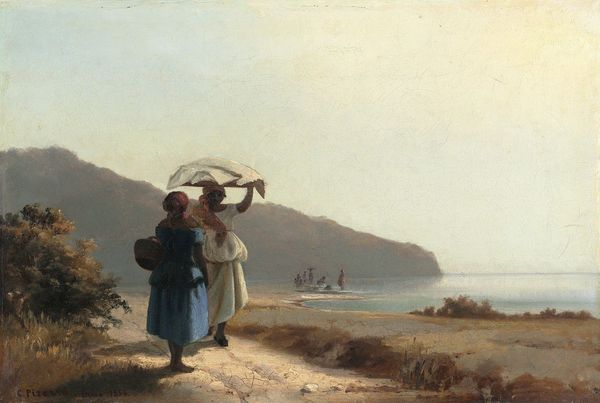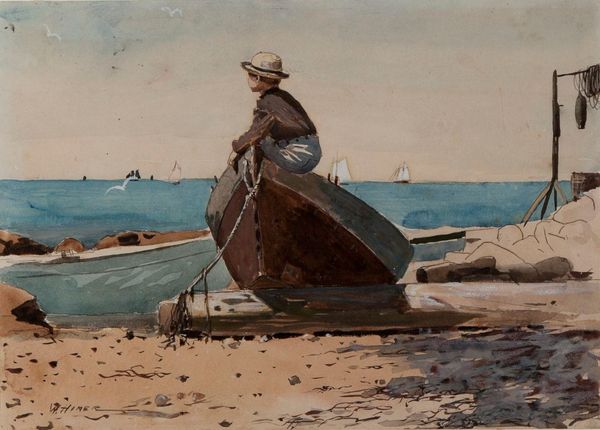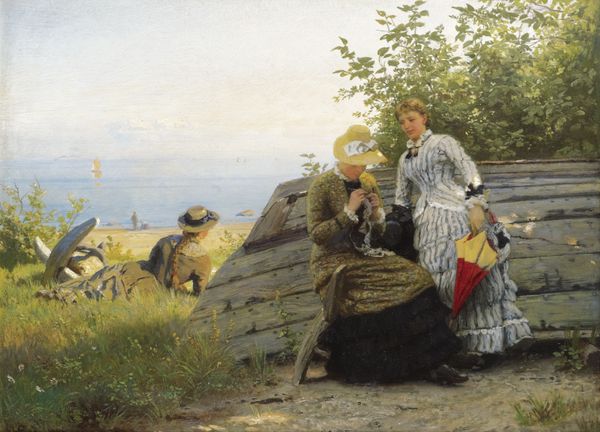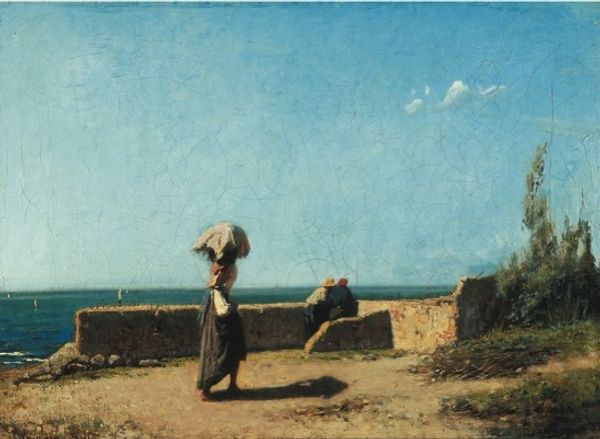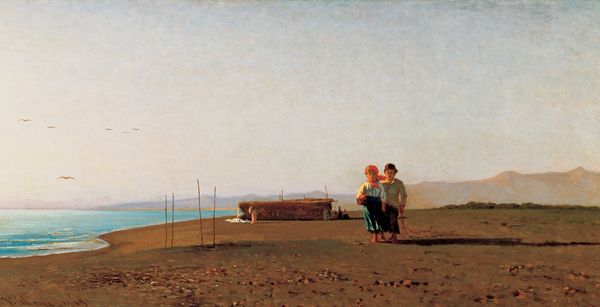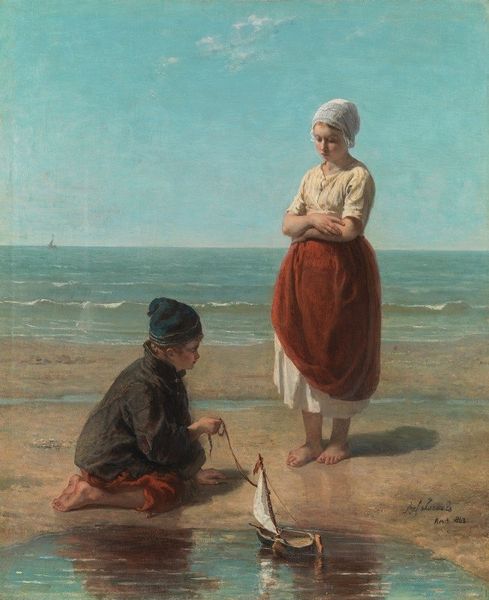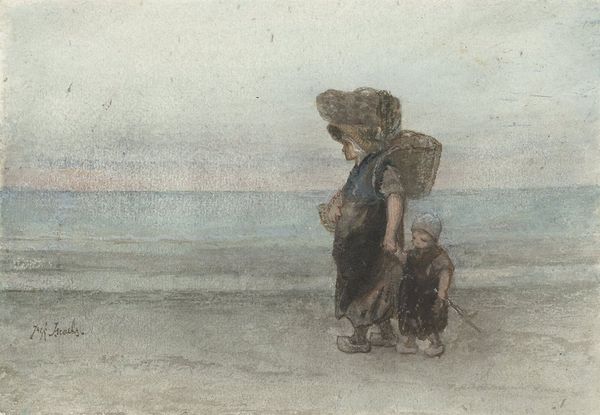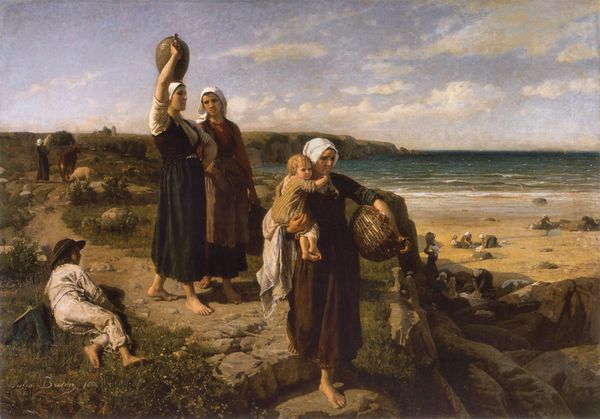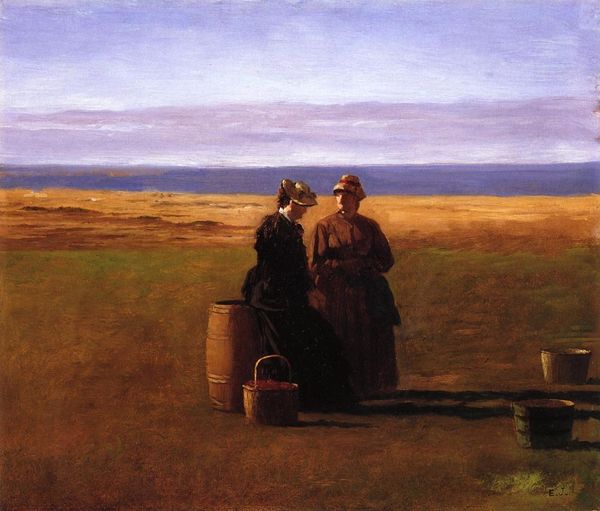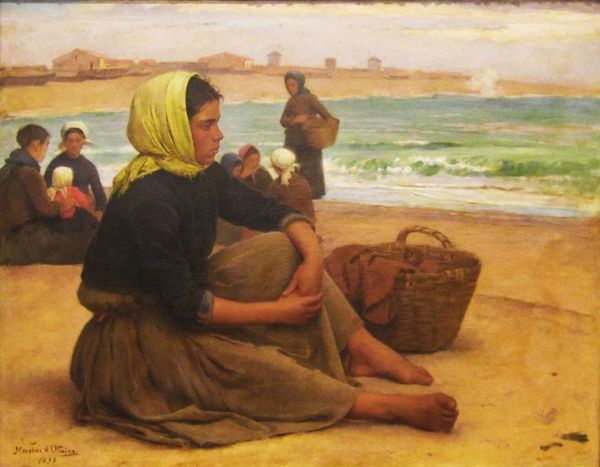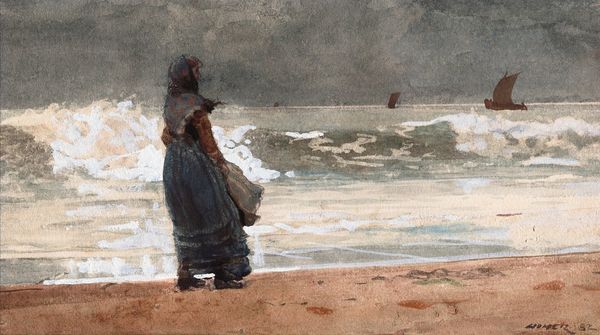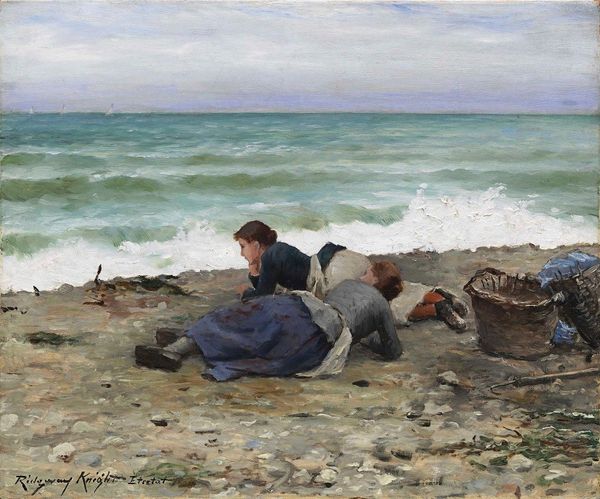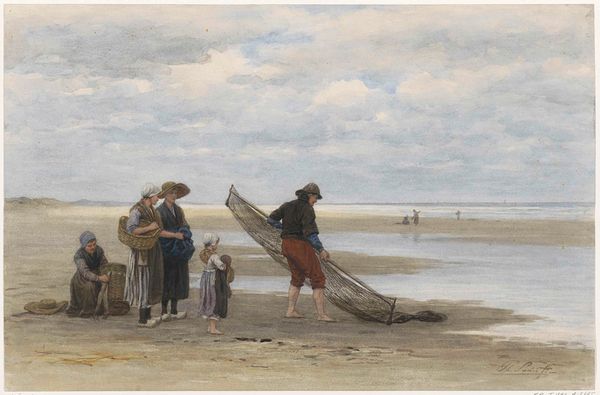
painting, plein-air, oil-paint
#
portrait
#
figurative
#
narrative-art
#
painting
#
impressionism
#
plein-air
#
oil-paint
#
landscape
#
painted
#
figuration
#
genre-painting
#
watercolor
Copyright: Public Domain: Artvee
Curator: Winslow Homer's 1873 painting, "Dad's Coming!" depicts a seaside scene with figures looking out towards the horizon. What strikes you initially? Editor: A melancholic mood settles over me. The figures, rendered with thick paint, are positioned statically, gazing outward. There’s a palpable tension between the stillness and the vastness of the sea. Curator: Homer was fascinated with coastal life and labor. Consider the materiality here—the weathered wood of the boats, the coarse fabric of the figures' clothing. These elements underscore the daily existence of a fishing community, reliant on natural resources and susceptible to environmental hardships. Editor: Indeed. Observe how the light defines form: a delicate balance of shades modulating the figures’ faces, and how the artist renders atmospheric depth with those misty sailboats. The composition and execution are meticulously arranged to achieve maximum visual effect. Curator: These subjects aren't romanticized heroes. They’re presented through careful observation of everyday labor. Consider how innovations in paint manufacturing allowed for more convenient plein air work and impacted Homer's approach to portraying realism through lived experiences of class and economy. Editor: While process certainly matters, Homer masterfully uses form to communicate psychological space. The tilt of the boy's head, the slight curve of the mother’s back suggest longing, waiting. It's a study in understated emotion delivered through careful design. Curator: I think that emotional resonance grows out of Homer’s dedication to an unembellished presentation of life and work shaped by very material conditions. Editor: Perhaps. But without the masterful use of pictorial language, those themes would lack resonance. Homer orchestrates visual dynamics masterfully. It's truly moving to observe these elements interacting and coalescing. Curator: A reminder that we both view the power of an artwork through different lenses. Editor: Agreed. Though distinct, our perspectives serve to reveal Homer’s success in unifying artistic practice.
Comments
No comments
Be the first to comment and join the conversation on the ultimate creative platform.
